Philip Coburn
Photographer
I am a photojournalist based in London. I have been a news and editorial photographer for over 30 years now. In my career starting out covering the 'Troubles' in N. Ireland shooting in black and white film, I have covered the genocide in Rwanda, Volcano eruptions in Montserrat, Gulf War II, and dozens assignments in Iraq and Afghanistan, as well numerous other assignments including Hurricane Katrina. I was seriously injured whilst on assignment in Helmand Province, Afghanistan when an I.E.D. blast hit the U.S. Marine M.R.A.P. in which I was travelling in on the 9th of Jan. 2010. I lost my lower legs and broke my back and spent 4 months in hospital. I returned to work later that year. Post injury assignments have included dispatches from Gaza, Iraq, Yemen, Ivory Coast, New Zealand, Saudi Arabia numerous European jobs. I recently covered the death and funeral of Pope Francis in Rome and the Conclave for a new Pope. Currently staff photographer for the Daily Mirror.

Two models stand in front of an Armoured Personnel Carrier at ShieldAfrica Arms Fair 2017, the International Security and Defence Exhibition that took place in Abidjan, Côte d'Ivoire from the 24 to 26 January 2017.
Photo:Philip Coburn
© Philip Coburn

French troops bury Rwandan refugees who died from cholera and other diseases in the make shift camps outside Goma, Zaire (as it was then), that people made after fleeing the genocide in their homeland.
©PhilipCoburn
© ©Philip Coburn
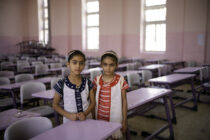
Sisters Ahlaa and Masra at their first day back at Abi Tamam school in Mosul. They survived the bombardment on the city by hiding in a cave under their home for three months with 47 other members of their family.
The battle for Mosul lasted from November 2016 until July 2017. It is estimated that at least ten thousand civilians were killed in the fighting, many by the so called Islamic State but also in the fighting between IS and Iraqi Army but also by western coalition air strikes. Most of the fighting was in the Old City district of west Mosul where I.S. were holed up in the narrow alleys. I shot these photographs on assignment to mark the 1st anniversary of the battle for Mosul to retake IraqiÕs 2nd largest city from Isis. Over 8 thousand homes were destroyed during the conflict and even today a lot of the buildings remain destroyed and have yet to be rebuilt.
Photo:Philip Coburn
© ©Philip Coburn

Pope Francis’s body is moved from his residence to lie in state at St Peter’s Basilica in the Vatican City.
Photo:Philip Coburn/Daily Mirror
See Matt Young Daily Mirror
© Philip Coburn/Daily Mirror
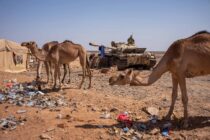
Yemeni Army check point on the road to front line position near Houthi rebel positions near Sanaa in Yemen.
Over 377,000 people have died as a result of the conflict in Yemen since 2015 of these 10,200 children have been killed or seriously injured. Over 4 million people mainly women & children have been forced to flee their homes due to the fighting.
Many have gone to neighbouring countries but many more live in spartan and difficult conditions in make shift refugee camps. Houthi rebels have forcibly recruited 10,300 children aged 10 yrs and above to fight in the conflict. Testimonies from former boy soldiers tell of harsh treatments & severe punishments including violent assaults and imprisonments with some being sexually assaulted. In 2020 alone 1,500 child soldiers were killed in battles. Starvation and disease is rife and there is no end in sight to the conflict to date.
Photo:Philip Coburn
© ©Philip Coburn

French troops bury Rwandan refugees at Kibumba camp, a major Rwandan refugee camp located in Goma, Zaire (now the Democratic Republic of the Congo who died from cholera and other diseases in the make shift camps that people made after fleeing the genocide in their homeland.
©PhilipCoburn1994
© ©Philip Coburn

British soldiers are caught in the down draft of an R.A.F. chinook helicopter during a re-supply run on the desert plains west of Musa Qala during fighting to retake the Helmand province town from the Taliban. They were part of the Brigade Reconnaissance Force (BRF) 52 Brigade were a specialist observation unit and mobile fighting force in Helmand province, Afghanistan used against the Taliban in late 2007 and early 2008. They lived and slept in the open air under the Helmand skies from their vehicles and wagons and rarely returned to base. They were resupplied by air or land convoys and reputedly were involved in the longest desert patrol by British forces since WWII. They were called the ‘Warriors whom God protects’ by the Taliban due to their lightly armoured and slightly ramshackle wagons. They could rarely wash or shave and were a fairly wild bunch to look at. On one of the few occasions they retired to Camp Bastion a senior British commander told them that they looked a disgrace and made them shave their beards off. The BRF had become supersicious and believed that this took some of their mystic and luck away and never forgave the Colonel concerned. In December 2007 they secured a safe route into Musa Qala to retake the town from the Taliban, probing their units and fighting against them as they tried to avoid the many I.E.D.s and countless legacy mines laid by the Russians during their time there in the 1980’s. As well as clearing the way for a 400 vehicle convoy they co-ordinated air support for U.S. Forces and provided fire support for them during the battle to drive the Taliban from the Helmand town. I spent two weeks with the B.R.F. living and sleeping under the stars on the Helmand plains.On the evening that we joined them by a re-supply convoy they had suffered the death of one of their comrades in an IED blast which also resulted in serious injury to two others. A few weeks after I left them I was added to hear that a young soldier called Cpl Darryl Gardiner was killed by an I.E.D. blast. He was the driver for the wagon which I lived in for the time I spent with them and had got to know him fairly well. He died after a Land Rover WIK was blown up by a legacy mine and as his vehicle was the Brigades company ambulance if needed he was killed as he took the survivors to a helicopter landing strip in the desert when his open vehicle struck an I.E.D. killing him and injuring the survivors from the first blast.
Photograph:Philip Coburn
© Philip Coburn
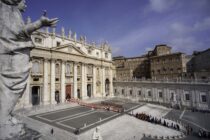
Pope Francis’s body is moved from his residence to lie in state at St Peter’s Basilica in the Vatican City.
Photo:Philip Coburn
© Philip Coburn/Daily Mirror
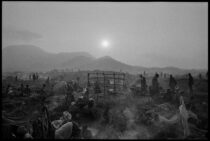
Rwandan refugees at Kibumba camp, a major Rwandan refugee camp located in Goma, Zaire (now the Democratic Republic of the Congo Cholera and other diseases reulted in the death of over 50,000 peoplei n the make shift camps after many had fled the genocide in their homeland.
©Philip Coburn
©PhilipCoburn1994
© ©Philip Coburn

Najin and Fatu the last two surviving northern white rhinos in the world at the Ol Pejeta Conservancy in northern Kenya are watched over by armed rangers.
Photo:Philip Coburn
© ©Philip Coburn

Marines of Whiskey Company 45 Commado Royal Marines move through the cover of smoke in the ‘green zone’ on their way back to their base F.O.B. Jackson Sangin district centre, Helmand Afghanistan.The smoke had been laid down to cover their return to the relative safety of their base.It was Whiskey company’s first patrol out of their base since their sergeant major was badly injured in an I.E.D. blast a few days before.He was seriously wounded losing a leg, an arm and any eye in the blast. They had recurred to the scene of the blast to gather evidence and detonate other I.E.D.s in the area.
Photograph:Philip Coburn
© PHILIP COBURN

Guard tower at Auschwitz-Birkenau is lit up during a memorial to mark the 75th anniversary of the liberation of the WW II Nazi run concentration/death camp in Poland. 1,080,000–1,085,000 men, woman and children were murdered there
Photo:Philip Coburn
© Philip Coburn

Divine Mbaloula – Enfield, North London
Divine has an older sister, 18, and twin brothers, 15. One twin contracted meningitis aged four and is now non-verbal. Divine cares for him along with her mother. Her brother also has autism and learning difficulties. Her mother, Augustine, 52, originally from Congo, moved to the UK in 2001. The family live in temporary accommodation, and are forever being moved around between emergency accommodation
Photo:Philip Coburn
© Philip Coburn

World leaders from all over the globe attended the funeral of Pope Francis at St Peter’s Square in the Vatican City.
President Trump, Prince William, President Zelensky, Manuel Macron, Keir Starmer were among many others who attended the service.
Photo:Philip Coburn/Daily Mirror
See Matt Young Daily Mirror
© ©Philip Coburn/Daily Mirror

Wagons from 52 Brigade Reconnaissance Force move through the desert plains west of Musa Qala.
(BRF) 52 Brigade were a specialist observation unit and mobile fighting force in Helmand province, Afghanistan used against the Taliban in late 2007 and early 2008. They lived and slept in the open air under the Helmand skies from their vehicles and wagons and rarely returned to base. They were resupplied by air or land convoys and reputedly were involved in the longest desert patrol by British forces since WWII. They were called the ‘Warriors whom God protects’ by the Taliban due to their lightly armoured and slightly ramshackle wagons. They could rarely wash or shave and were a fairly wild bunch to look at. On one of the few occasions they retired to Camp Bastion a senior British commander told them that they looked a disgrace and made them shave their beards off. The BRF had become supersicious and believed that this took some of their mystic and luck away and never forgave the Colonel concerned. In December 2007 they secured a safe route into Musa Qala to retake the town from the Taliban, probing their units and fighting against them as they tried to avoid the many I.E.D.s and countless legacy mines laid by the Russians during their time there in the 1980’s. As well as clearing the way for a 400 vehicle convoy they co-ordinated air support for U.S. Forces and provided fire support for them during the battle to drive the Taliban from the Helmand town. I spent two weeks with the B.R.F. living and sleeping under the stars on the Helmand plains.On the evening that we joined them by a re-supply convoy they had suffered the death of one of their comrades in an IED blast which also resulted in serious injury to two others. A few weeks after I left them I was added to hear that a young soldier called Cpl Darryl Gardiner was killed by an I.E.D. blast. He was the driver for the wagon which I lived in for the time I spent with them and had got to know him fairly well. He died after a Land Rover WIK was blown up by a legacy mine and as his vehicle was the Brigades company ambulance if needed he was killed as he took the survivors to a helicopter landing strip in the desert when his open vehicle struck an I.E.D. killing him and injuring the survivors from the first blast.
Photograph:Philip Coburn
© ©Philip Coburn

Abubaker Abdelkarim from who fled Sudan with his family pictured at his school in Nottingham. His objects are photographs of his family in Sudan
Photograph:Philip Coburn
© Philip Coburn

Mortar team from 2Yorks part of Brigade Reconnaissance Force on down time beween fighting the Taliban during the battle for Musa Qala. They were part of the Brigade Reconnaissance Force (BRF) 52 Brigade were a specialist observation unit and mobile fighting force in Helmand province, Afghanistan used against the Taliban in late 2007 and early 2008. They lived and slept in the open air under the Helmand skies from their vehicles and wagons and rarely returned to base. They were resupplied by air or land convoys and reputedly were involved in the longest desert patrol by British forces since WWII. They were called the ‘Warriors whom God protects’ by the Taliban due to their lightly armoured and slightly ramshackle wagons. They could rarely wash or shave and were a fairly wild bunch to look at. On one of the few occasions they retired to Camp Bastion a senior British commander told them that they looked a disgrace and made them shave their beards off. The BRF had become supersicious and believed that this took some of their mystic and luck away and never forgave the Colonel concerned. In December 2007 they secured a safe route into Musa Qala to retake the town from the Taliban, probing their units and fighting against them as they tried to avoid the many I.E.D.s and countless legacy mines laid by the Russians during their time there in the 1980’s. As well as clearing the way for a 400 vehicle convoy they co-ordinated air support for U.S. Forces and provided fire support for them during the battle to drive the Taliban from the Helmand town. I spent two weeks with the B.R.F. living and sleeping under the stars on the Helmand plains.On the evening that we joined them by a re-supply convoy they had suffered the death of one of their comrades in an IED blast which also resulted in serious injury to two others. A few weeks after I left them I was added to hear that a young soldier called Cpl Darryl Gardiner was killed by an I.E.D. blast. He was the driver for the wagon which I lived in for the time I spent with them and had got to know him fairly well. He died after a Land Rover WIK was blown up by a legacy mine and as his vehicle was the Brigades company ambulance if needed he was killed as he took the survivors to a helicopter landing strip in the desert when his open vehicle struck an I.E.D. killing him and injuring the survivors from the first blast.
Photograph:Philip Coburn
© ©Philip Coburn

Najin one of the last two surviving northern white Rhinos in the world at the Ol Pejeta Conservancy in Kenya are watched over by armed rangers.
Photograph:Philip Coburn
© ©Philip Coburn

Marines from 45 Commando X-Ray Company prepare a memorial to their three comrades who were killed the day before by a suicide bomber near F.O.B. Nolay, Sangin, Afghanistan. Marines carry a cross which was erected by 2 Parachute Regiment to their comrade Priv. Joe Whittaker 4th Batt. Parachute Regiment who was killed during a previous tour. Marine engineers had taken the measurements of the Para memorial so that their memorial to their fallen was the same size as the Parachute Regiment memorial as a mark of respect. Marines killed by suicide bomber 0n 12/12/08 were Sgt. John Manuel, Corpl. Marc Birch and Marine Damian Davies
PHOTO:Philip Coburn
© ©Philip Coburn

Jewish W.W.II and D-Day veteran Mervyn Kersh who also witnessed the horrors of the Belsen concentration camp pictured at home in north London on the eve of Armistice Day.
Photo:Philip Coburn
© PHILIP COBURN

MARINES FROM X-RAY COMPANY 45 COMMANDO PATROL IN A VILLAGE NEAR THEIR FORWARD OPERATING BASE IN NOLAY. IT WAS THEIR FIRST PATROL THERE AFTER THEY HAD RELOCATED FROM F.O.B. ROB. ON THIS PATROL THREE MARINES FROM X-RAY COMPANY WERE KILLED WHEN A THIRTEEN YEAR OLD BOY DETONATED A BOMB IN THE WHEEL-BARROW HE WAS PUSHING. THE MARINES THAT WERE KILLED WERE PART OF THE QUICK REACTION FORCE THAT WERE GUARDING A BRIDGE TO ENSURE THE REST OF THE PATROL GOT BACK TO THEIR BASE SAFELY. THE THREE MARINES THAT DIED THAT DAY WERE SGT. JAHN MANUEL, CPL. MARK BIRCH AND MARINE DAMIAN DAVIES. ANOTHER MARINE FROM X-RAY COMPANY, L. CPL. STEVEN FELLOWS, WAS ALSO KILLED THAT DAY ON A SEPARATE PATROL
PHOTO:PHILIP COBURN
© PHIL COBURN

Image shows B.R.F. moving through the Afghan plains west of Musa Qala as a family ride by on a motorbike. They were part of the Brigade Reconnaissance Force (BRF) 52 Brigade were a specialist observation unit and mobile fighting force in Helmand province, Afghanistan used against the Taliban in late 2007 and early 2008. They lived and slept in the open air under the Helmand skies from their vehicles and wagons and rarely returned to base. They were resupplied by air or land convoys and reputedly were involved in the longest desert patrol by British forces since WWII. They were called the ‘Warriors whom God protects’ by the Taliban due to their lightly armoured and slightly ramshackle wagons. They could rarely wash or shave and were a fairly wild bunch to look at. On one of the few occasions they retired to Camp Bastion a senior British commander told them that they looked a disgrace and made them shave their beards off. The BRF had become supersicious and believed that this took some of their mystic and luck away and never forgave the Colonel concerned. In December 2007 they secured a safe route into Musa Qala to retake the town from the Taliban, probing their units and fighting against them as they tried to avoid the many I.E.D.s and countless legacy mines laid by the Russians during their time there in the 1980’s. As well as clearing the way for a 400 vehicle convoy they co-ordinated air support for U.S. Forces and provided fire support for them during the battle to drive the Taliban from the Helmand town. I spent two weeks with the B.R.F. living and sleeping under the stars on the Helmand plains.On the evening that we joined them by a re-supply convoy they had suffered the death of one of their comrades in an IED blast which also resulted in serious injury to two others. A few weeks after I left them I was added to hear that a young soldier called Cpl Darryl Gardiner was killed by an I.E.D. blast. He was the driver for the wagon which I lived in for the time I spent with them and had got to know him fairly well. He died after a Land Rover WIK was blown up by a legacy mine and as his vehicle was the Brigades company ambulance if needed he was killed as he took the survivors to a helicopter landing strip in the desert when his open vehicle struck an I.E.D. killing him and injuring the survivors from the first blast.
Photograph:Philip Coburn
© ©Philip Coburn
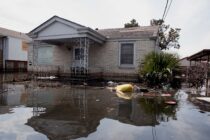
The aftermath of Hurricane Katrina in New Orleans September 2005 Photo:Philip Coburn

British soldiers look over a sheer drop in a waddi near the desert plains west of Musa Qala during a break in the fighting to retake the Helmand province town from the Taliban. They were part of the Brigade Reconnaissance Force (BRF) 52 Brigade were a specialist observation unit and mobile fighting force in Helmand province, Afghanistan used against the Taliban in late 2007 and early 2008. They lived and slept in the open air under the Helmand skies from their vehicles and wagons and rarely returned to base. They were resupplied by air or land convoys and reputedly were involved in the longest desert patrol by British forces since WWII. They were called the ‘Warriors whom God protects’ by the Taliban due to their lightly armoured and slightly ramshackle wagons. They could rarely wash or shave and were a fairly wild bunch to look at. On one of the few occasions they retired to Camp Bastion a senior British commander told them that they looked a disgrace and made them shave their beards off. The BRF had become supersicious and believed that this took some of their mystic and luck away and never forgave the Colonel concerned. In December 2007 they secured a safe route into Musa Qala to retake the town from the Taliban, probing their units and fighting against them as they tried to avoid the many I.E.D.s and countless legacy mines laid by the Russians during their time there in the 1980’s. As well as clearing the way for a 400 vehicle convoy they co-ordinated air support for U.S. Forces and provided fire support for them during the battle to drive the Taliban from the Helmand town. I spent two weeks with the B.R.F. living and sleeping under the stars on the Helmand plains.On the evening that we joined them by a re-supply convoy they had suffered the death of one of their comrades in an IED blast which also resulted in serious injury to two others. A few weeks after I left them I was added to hear that a young soldier called Cpl Darryl Gardiner was killed by an I.E.D. blast. He was the driver for the wagon which I lived in for the time I spent with them and had got to know him fairly well. He died after a Land Rover WIK was blown up by a legacy mine and as his vehicle was the Brigades company ambulance if needed he was killed as he took the survivors to a helicopter landing strip in the desert when his open vehicle struck an I.E.D. killing him and injuring the survivors from the first blast.
Photograph:Philip Coburn
© ©Philip Coburn

D-DAY veterans on from the Essex Normandy Veterans AssociationJuno beach in Normandy where they landed 70 years ago. Owen Butcher on Juno Beach
Photo:Philip Coburn
© ©Philip Coburn

Sir Keir Starmer M.P. for Holborn and St. Pancras who is running for the leadership of the Labour Party pictured in his constituency office.
Photo:Philip Coburn
© ©Philip Coburn

The Tower of London with the Poppy Tribute at sunrise on Armistice Day.
PHOTO:Philip Coburn
© ©Philip Coburn
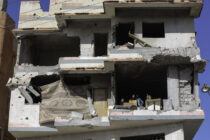
Family living in their partially destroyed home in Gaza. Six months after the last Gaza war with Israel many homes have not been rebuilt or repaired.
Photo:Philip Coburn 2015
© ©Philip Coburn
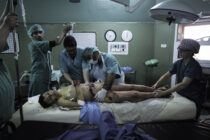
15-year-old Majad one of three cousins who were injured when a legacy shell went off near where they were playing in Gaza City. Palestinian and British surgeons at Al-Shifa hospital in Gaza helped to save his life despite his severe injuries.
Photo:Philip Coburn
© Philip Coburn

The 75th Anniversary of the Liberation of Auschwitz represented an obvious opportunity to reflect on the ultimate evil of war, especially against a backdrop of rising anti-Semitism in Europe and the UK. This was a crowded, slightly chaotic event, at which heavy security for Polish dignitaries threatened to overshadow the poignancy of the occasion and the stories of the survivors themselves. It was against the odds that I spotted 94-year-old Igor Malickij wiping away a tear in the throng, and ducked around a security guard's shoulder to take the picture. I think it demonstrates how perseverance - indeed, stubbornness - are just as important as an excellent eye when it comes to getting the best possible photograph to tell a story.
Photograph:Philip Coburn
© ©Philip Coburn

Young recruits undergo training at The Army Foundation College in Harrogate, Yorks. U.K. It is the only British Army establishment that gives basic training to young soldiers aged between 16 years and 17 years and 5 months.
Photo:Philip Coburn
© ©Philip Coburn

Children return to school in the Shuja'iyya area of Gaza City for the first time since the last war between Hamas and the Israeli army
14/02/2015
© ©Philip Coburn

French troops bury Rwandan refugees who died from cholera and other diseases in the make shift camps that people made after fleeing the genocide in their homeland.
PHOTO:PHILIP COBURN 1994
©PhilipCoburn1994
© PHILIP COBURN
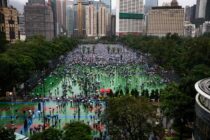
People gather at Victoria Park in Hong Kong for a protest against being subject to the more draconian laws that exist on the Chinese mainland. The Park holds 100,000 people and twice that amount were outside. Over two million people protested on that day in Hong Kong despite a ban on any form of non licensed protests on that day.
Photo:Philip Coburn
© ©Philip Coburn

Dalal aged 8 years who along with her family has moved back to her devastated home in the Old City district of west Mosul.
The battle for Mosul lasted from November 2016 until July 2017. It is estimated that at least ten thousand civilians were killed in the fighting, many by the so called Islamic State but also in the fighting between IS and Iraqi Army but also by western coalition air strikes. Most of the fighting was in the Old City district of west Mosul where I.S. were holed up in the narrow alleys. I shot these photographs on assignment to mark the 1st anniversary of the battle for Mosul to retake Iraqi’s 2nd largest city from Isis. Over 8 thousand homes were destroyed during the conflict and even today a lot of the buildings remain destroyed and have yet to be rebuilt.
Photograph:Philip Coburn
© ©Philip Coburn
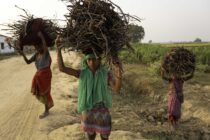
A girl carries wood kindling for a brick factory in Nepal near the Indian border in Banke District. Many school age children and young women from poor families work in brick kiln factories in Nepal to help earn income for their families which has a detrimental effect of their schooling and their health. Due to gender inequality in Nepal girls and young women are more likely to be involved in labour intensive jobs and also work longer hours.
Photo:Philip Coburn
© ©Philip Coburn

Child refugee at a make shift refugee camp in woodlands near a motorway in Calais, northern France. Her parents had fled their homeland due to religious persecution in Iran. They plan to make the perilous crossing from the French coast across the Chanel to the U.K.
Photo:Philip Coburn
© PHILIP COBURN

BRF motar team fire on Taliban compound to destroy DShK machine gun which was attacking Apache helicopts during the Battle for Musa Qala. They were part of the British Reconnaissance Force (BRF) 52 Brigade were a specialist observation unit and mobile fighting force in Helmand province, Afghanistan used against the Taliban in late 2007 and early 2008. They lived and slept in the open air under the Helmand skies from their vehicles and wagons and rarely returned to base. They were resupplied by air or land convoys and reputedly were involved in the longest desert patrol by British forces since WWII. They were called the ‘Warriors whom God protects’ by the Taliban due to their lightly armoured and slightly ramshackle wagons. They could rarely wash or shave and were a fairly wild bunch to look at. On one of the few occasions they retired to Camp Bastion a senior British commander told them that they looked a disgrace and made them shave their beards off. The BRF had become supersicious and believed that this took some of their mystic and luck away and never forgave the Colonel concerned. In December 2007 they secured a safe route into Musa Qala to retake the town from the Taliban, probing their units and fighting against them as they tried to avoid the many I.E.D.s and countless legacy mines laid by the Russians during their time there in the 1980’s. As well as clearing the way for a 400 vehicle convoy they co-ordinated air support for U.S. Forces and provided fire support for them during the battle to drive the Taliban from the Helmand town. I spent two weeks with the B.R.F. living and sleeping under the stars on the Helmand plains.On the evening that we joined them by a re-supply convoy they had suffered the death of one of their comrades in an IED blast which also resulted in serious injury to two others. A few weeks after I left them I was added to hear that a young soldier called Cpl Darryl Gardiner was killed by an I.E.D. blast. He was the driver for the wagon which I lived in for the time I spent with them and had got to know him fairly well. He died after a Land Rover WIK was blown up by a legacy mine and as his vehicle was the Brigades company ambulance if needed he was killed as he took the survivors to a helicopter landing strip in the desert when his open vehicle struck an I.E.D. killing him and injuring the survivors from the first blast.
Photograph:Philip Coburn
© Philip Coburn

School pupils from Christchurch schools attend a youth rally in support of the victims of the Christchurch mosque murders in Christchurch, New Zealand. Some pupils performed an impromptu Haka opposite the Al-Noor mosque.
Photo:Philip Coburn
© Philip Coburn

The Morandi Bridge in Genoa where a 200 metre section of the bridge collapsed killing 43 people.
Photo:Philip Coburn
© Philip Coburn

Royal Navy Submarine H.M.S. Torbay on the surface of the St George's Channel before diving and heading out to the Atlantic.The vessel and her crew make ready for a mission by under going weapons drills and manoeuvres in the Atlantic. HMS Torbay was decommissioned this year after 26 years of service.
PHOTO:Philip Coburn
© ©Philip Coburn
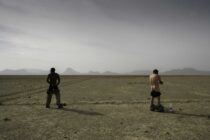
Two British soldiers take a moment to have a bottle wash on the desert plains west of Musa Qala during fighting to retake the Helmand province town from the Taliban. They were part of the British Reconnaissance Force (BRF) 52 Brigade were a specialist observation unit and mobile fighting force in Helmand province, Afghanistan used against the Taliban in late 2007 and early 2008. They lived and slept in the open air under the Helmand skies from their vehicles and wagons and rarely returned to base. They were resupplied by air or land convoys and reputedly were involved in the longest desert patrol by British forces since WWII. They were called the ‘Warriors whom God protects’ by the Taliban due to their lightly armoured and slightly ramshackle wagons. They could rarely wash or shave and were a fairly wild bunch to look at. On one of the few occasions they retired to Camp Bastion a senior British commander told them that they looked a disgrace and made them shave their beards off. The BRF had become supersicious and believed that this took some of their mystic and luck away and never forgave the Colonel concerned. In December 2007 they secured a safe route into Musa Qala to retake the town from the Taliban, probing their units and fighting against them as they tried to avoid the many I.E.D.s and countless legacy mines laid by the Russians during their time there in the 1980’s. As well as clearing the way for a 400 vehicle convoy they co-ordinated air support for U.S. Forces and provided fire support for them during the battle to drive the Taliban from the Helmand town. I spent two weeks with the B.R.F. living and sleeping under the stars on the Helmand plains.On the evening that we joined them by a re-supply convoy they had suffered the death of one of their comrades in an IED blast which also resulted in serious injury to two others. A few weeks after I left them I was added to hear that a young soldier called Cpl Darryl Gardiner was killed by an I.E.D. blast. He was the driver for the wagon which I lived in for the time I spent with them and had got to know him fairly well. He died after a Land Rover WIK was blown up by a legacy mine and as his vehicle was the Brigades company ambulance if needed he was killed as he took the survivors to a helicopter landing strip in the desert when his open vehicle struck an I.E.D. killing him and injuring the survivors from the first blast.
Photograph:Philip Coburn
© Philip Coburn

RWANDAN REFUGEES FLEE THE GENOCIDE INTO ZAIRE. THE RWANDAN GENOCIDE IN 1994
Photo:Philip Coburn
©PHILIPCOBURN 1994
© ©Philip Coburn

FOUR HUNDRED PLUS PEOPLE WERE KILLED AT CHURCH IN NTARAMA, RWANDA DURING WAVE OF GENOCIDAL KILLINGS BY HUTU MiLITIA
PHOTO:PHILIP COBURN 1994
©PhilipCoburn1994
© ©Philip Coburn

Image shows brother and sister as they walk past U.S. Marine patrol in Helmand. Last dispatch with Rupert Hamer from FOB Geronimo and FOB Fiddlers Green with 1/3 U.S. Marines in Helmand Province, Afghanistan shortly before the convoy in which we were travelling in was attacked. The MRAP we were in was hit by a targeted IED strike at noon 9th January 2010
Photograph: Philip Coburn
© ©Philip Coburn
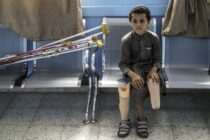
9 year old Salah al Wahbel who lost his lower left leg when he stood on a anti personel mine near his home in Yemen when he was playing with his friends and his brother. He is pictured as he waits for an appointment with his prosthetist at a hospital in Marib, Yemen.
Over 377,000 people have died as a result of the conflict in Yemen since 2015 of these 10,200 children have been killed or seriously injured. Over 4 million people mainly women & children have been forced to flee their homes due to the fighting. Many have gone to neighbouring countries but many more live in spartan and difficult conditions in make shift refugee camps. Houthi rebels have forcibly recruited 10,300 children aged 10 yrs and above to fight in the conflict. Testimonies from former boy soldiers tell of harsh treatments & severe punishments including violent assaults and imprisonments with some being sexually assaulted. In 2020 alone 1,500 child soldiers were killed in battles. There is currently a cease fire in the conflict.
Photograph:Philip Coburn
© ©Philip Coburn

RWANDAN REFUGEE AT NDOSHO ORPHANAGE IN ZAIRE ONE OF TENS OF THOUSANDS WHO LOST
PARENTS DURING MASS KILLINGS AND CIVIL WAR IN THEIR HOMELAND.
©PhilipCoburn
© ©Philip Coburn
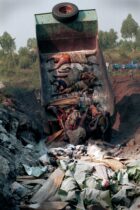
FRENCH TROOPS BURY RWANDAN REFUGEES AT CAMP
OUTSIDE GOMA, ZAIRE, (AS IT WAS KNOWN THEN). MOST OF THE DEAD WERE VICTIMS OF DISEASE, MAINLY CHORELA.
PHOTO:PHILIP COBURN 1994
©PhilipCoburn1994
© ©Philip Coburn
